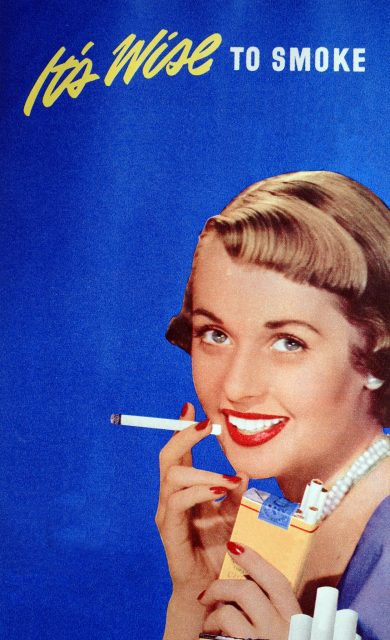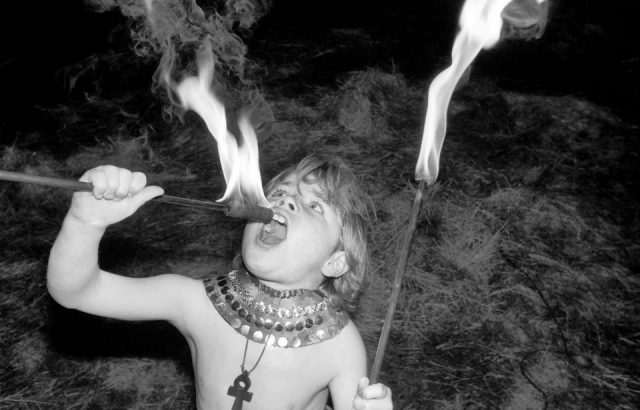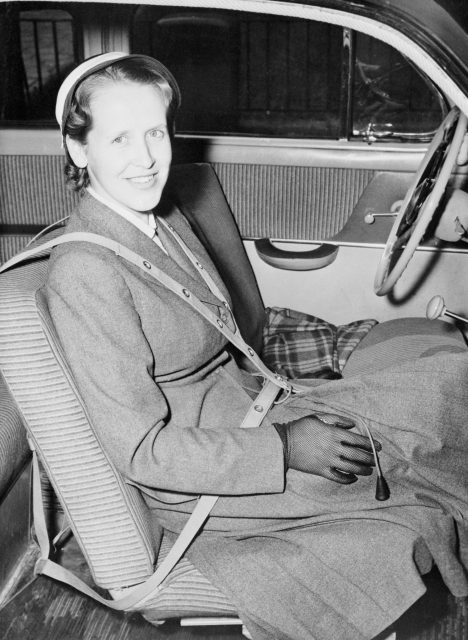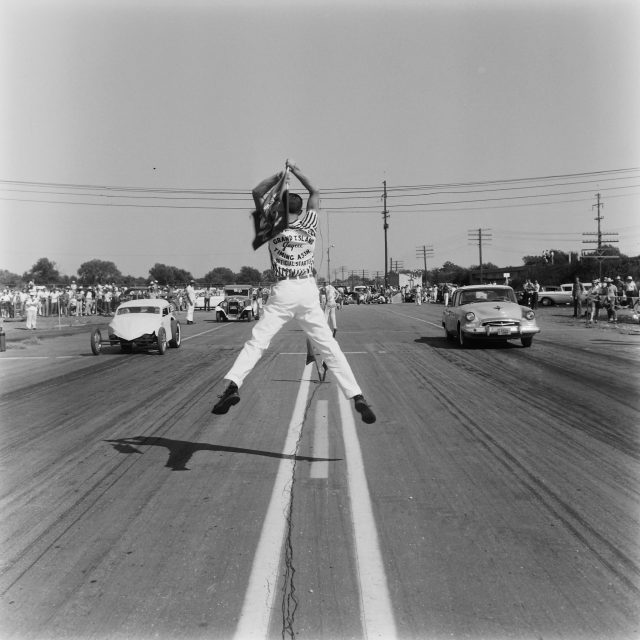The 1950s wasn’t all suburban streets, TV dinners, and white picket fences. Beneath that shiny exterior was a world of danger. Trouble is, people didn’t understand the risks.
Stuff we simply don’t do now was very much the done thing all those decades ago! Check out some examples from a happier, but decidedly more hazardous, time…
Smoke gets in your eyes (and everywhere else)
Nowadays you get a dirty look just for mentioning cigarettes in a public place. But it was a different story back in the 1950s.

Lighting up in the movie house while your favorite stars puffed their way through mountains of tobacco was seen as perfectly normal. And coughing up your guts while carrying a child became worryingly acceptable.
Talk of a crazy connection with the likes of lung cancer was frowned upon, particularly by tobacco companies. They needed to ensure their product kept selling — to that end the Tobacco Industry Research Committee was established during Fall 1953.
By January 1954, a communication had been released called the Frank Statement. The Tobacco Tactics website (University of Bath) writes that it was “published in 448 newspapers throughout the United States with an estimated reach of approximately 43 million people nationwide.”
Also hitting the airwaves, the Committee’s message highlighted what they saw as a lack of concrete evidence among naysayers. The industry focused on the “prolific use of doubt” to sway smokers. Science, schmience!
It bought them some time but proved disastrous for the health of their avid audience in the long run.
Wanna play a game? And go to the hospital?
The Simpsons may make jokes about children being encouraged to smoke. But that actually isn’t far from the truth. Even the toy market wasn’t safe from nicotine’s clutches.
BuzzFeed reminds us of a pedal car complete with its own ashtray. As if that wasn’t a vivid enough picture to paint, a photo was taken of a young lad filling his lungs with smoke!

Maybe a life at the office or working shifts at a factory isn’t for you. Never fear, training kits for aspiring fire eaters… yes, fire eaters… were available to buy in the mid-’50s.
And for a truly authentic look at science, why not buy your kid an atomic energy lab in a box? Is the sample of actual uranium missing? Call this number and we’ll be happy to send a replacement.
Seat belts? Give me a break…
The automobile was king in the 1950s. What wasn’t so hot was the concept of road safety. For example, it took till the late ’60s before seat belts were a requirement in the U.S.

You could purchase a vehicle with a seat belt, for sure. Wearing them, on the other hand? That was a question of personal taste rather than common sense.
“Among the arguments put forth against seatbelts was that they could cause internal injuries,” notes WPR. They add that they possibly “prevented easy escapes from cars submerged in water.”
Many motorists didn’t see the point in them. In the 1950s, a call to buckle up often received a reply of “shut up.”
And as for helmets on bikes, what are you, insane? Little Things writes it was “kind of taboo” to protect your noggin before pedalling away.
Brain being a pain? Just disconnect it!
“Lobotomy” isn’t a word you hear much of in connection with medical treatment today. The gruesome process was the brainchild of Egas Moniz, a neurologist from Portugal who jointly won the Nobel Prize for his efforts in 1949.
What did this award-winning procedure involve? Those of a nervous disposition should look away now.
To begin with, doctors would “drill a pair of holes into the skull, either at the side or top, and push a sharp instrument — a leucotome — into the brain,” writes the BBC. The leucotome would then be moved from side to side in order to disconnect the all-important frontal lobes.
The purpose of this treatment was, alarmingly, to address mental health issues. Needless to say, the dehumanizing practice didn’t last long.
Dying’s a drag
What’s a great way to enjoy your car without a seat belt on? White knuckle drag racing, of course! Another familiar sight from the big screen, teenagers chewed their matchsticks and revved their engines as they challenged one another to a thrill ride.

It has its roots before the 1950s, but the sport captured American imaginations throughout this time. Driving Line presents a history of drag racing that shows how productive the decade became.
An attempt was made to rein in the rubber-burning from the get-go. The NHRA (National Hot Rod Association) was set up in ‘51 to legitimize the accident-happy antics. Topping up your tank was never more mainstream. Though what went in it proved pretty controversial.
“Nitromethane, used as a fuel in top classes, was notorious,” writes Driving Line: “it was volatile, and propelled cars to then-unheard-of speeds.” A “nitro” ban came into force via the NHRA in 1957. Rival organization AHRA (American Hot Rodding Association) weren’t so fussy, it seems.
More from us: School Life In The 1950s And 1960s Was Really Its Own Thing
The legacy of activities like drag racing lives on through the Fast & Furious movie franchise. Thankfully, these days, people enjoy the full-throttle fun from the comfort of a cinema seat.
